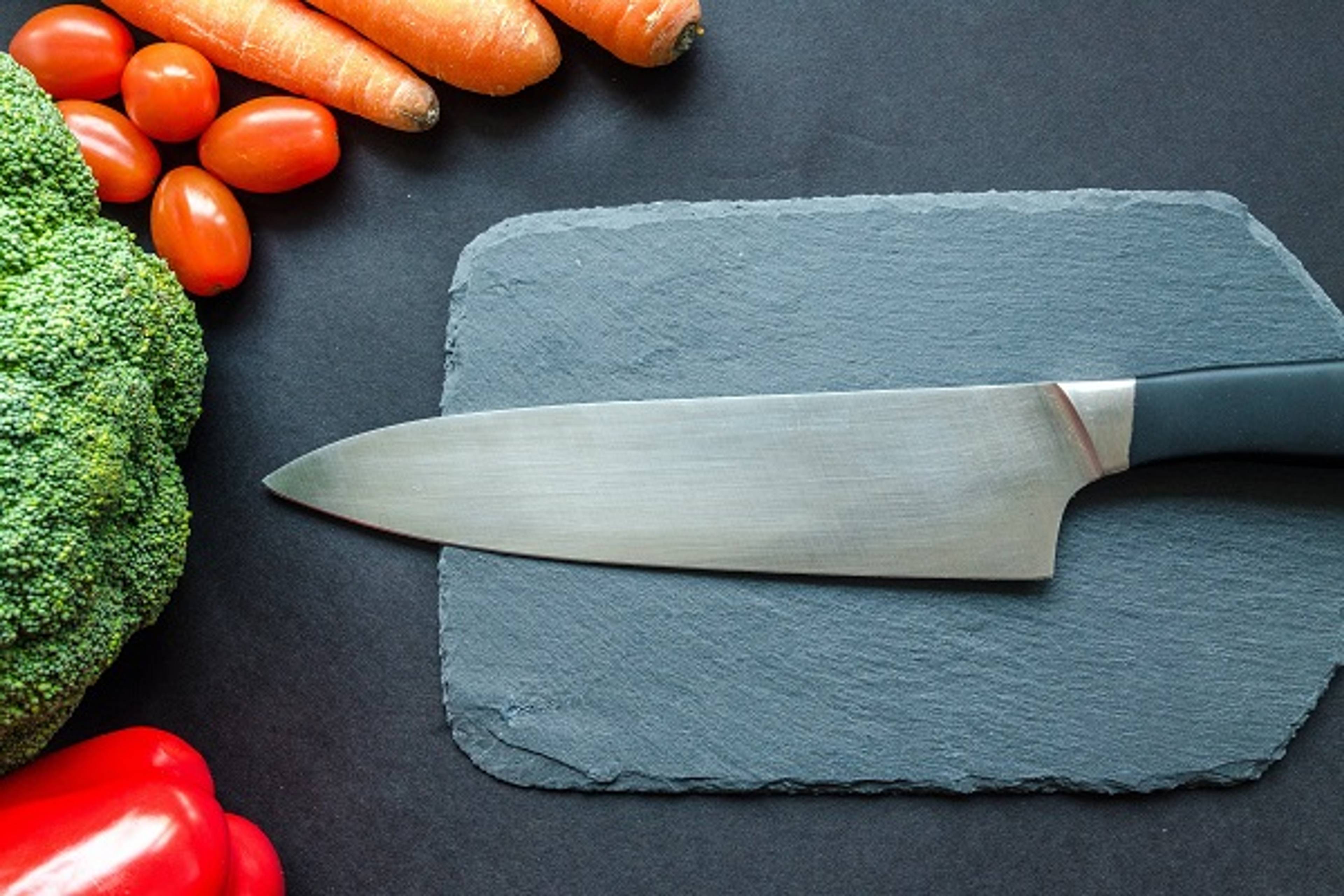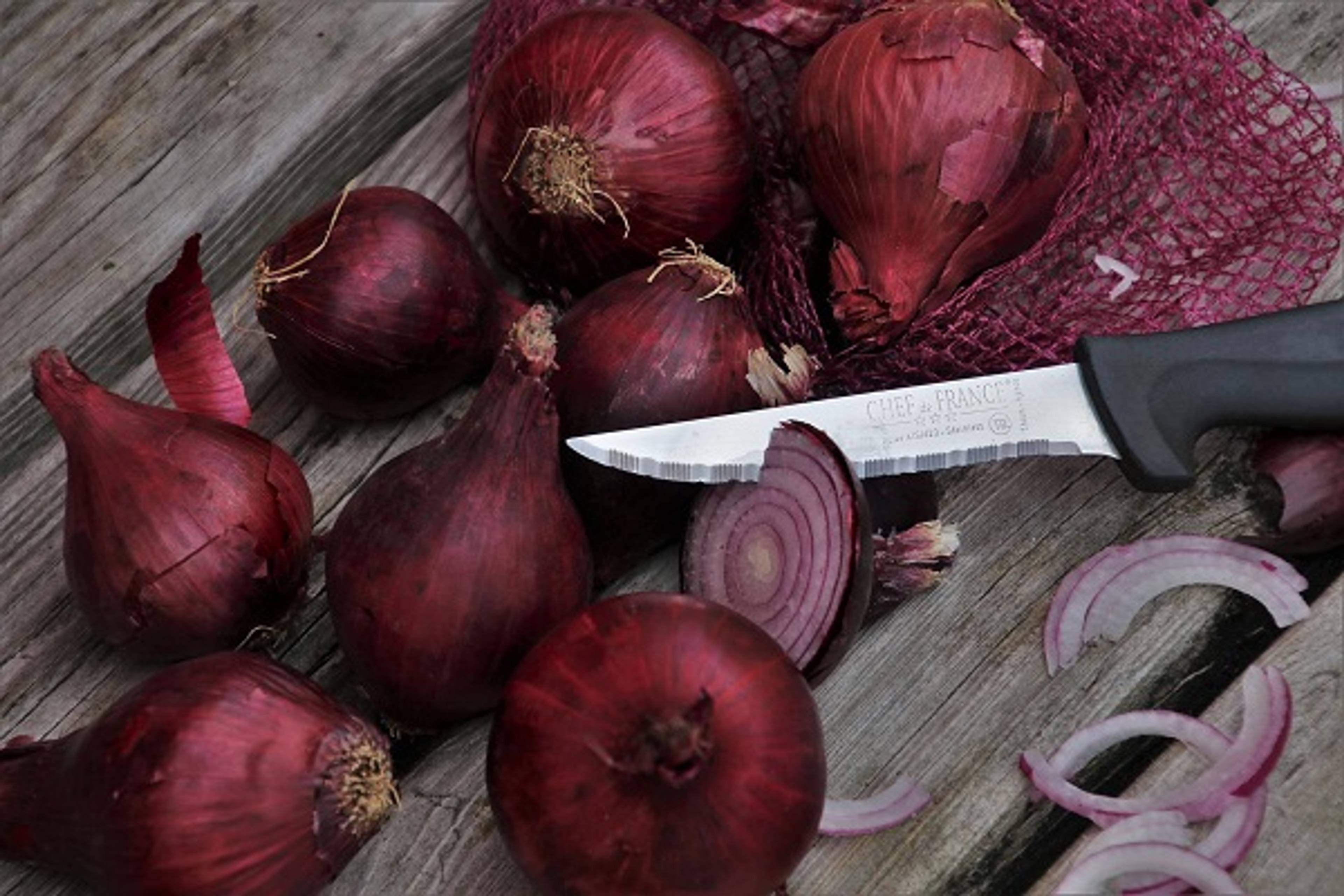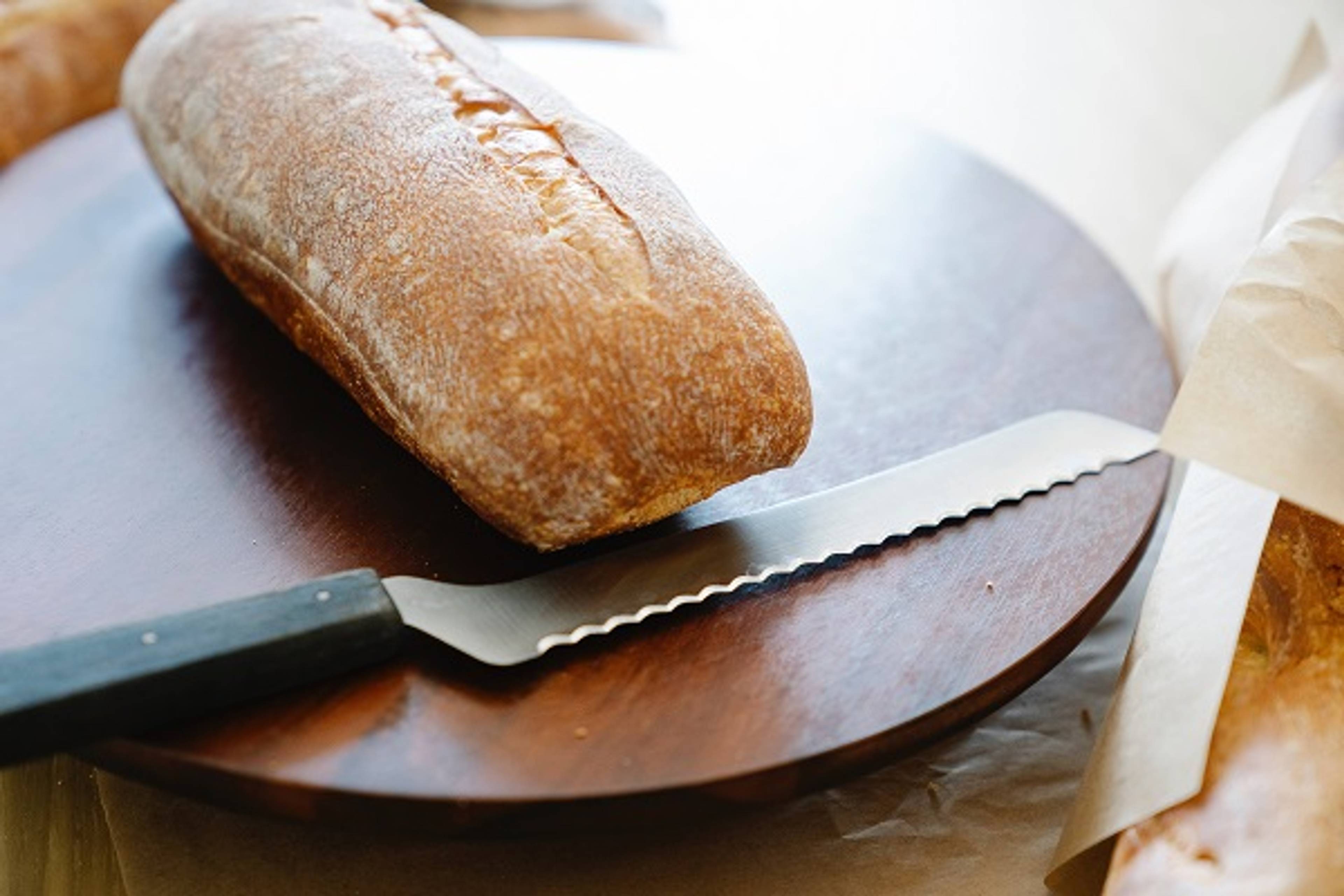What Are the Different Types of Kitchen Knives?
Kitchen Knives 101
Kitchen knives are one of the few tools you’ll use virtually every time you prepare food. That doesn’t mean you need to invest in an expensive set of knives—or even a single expensive knife. But what it does mean is that before you buy kitchen knives or upgrade from what you already have, you should know the basics of different types of kitchen knives.
The Big 3: Chef’s Knife, Paring Knife, Serrated Knife
Despite the numerous slots on the knife blocks you might see on people’s kitchen counters, there are really only three types of kitchen knives that you truly need: a chef’s knife, a paring knife, and a serrated knife. If you’re a blade lover, you can always expand your collection, but this trio will get you through pretty much any kitchen sitch. And no matter the size of your collection, make sure that your knives are sharp—using a dull knife will put you on the fast track to bandaged fingers.

1. Chef’s Knife

2. Paring Knife

3. Serrated Knife
Other Important Knives in the Kitchen
Santoku knife
Similar to a chef’s knife in its purpose, a santoku knife has a thinner blade, so it’s lighter in the hand. This makes a santoku knife, which originated in Japan, helpful in more precise cutting.
Nakiri knife
Another Japanese invention, the nakiri knife is made specifically for cutting vegetables. It has a rounded or blunt tip, not a sharp tip, and is great for chopping straight up and down (unlike the rocking motion that chef’s knives are made for).
Cleaver
A large, heavy knife, usually with a hole toward the end, a cleaver is designed to cut into large cuts of meat and other tough items. Its blade is wider than a butcher’s knife.
Butcher’s knife
Like a cleaver, a butcher’s knife is designed for cutting meat. But its smaller, narrower blade allows for more precise cutting.
Utility knife
As with a chef’s knife and paring knife, this knife’s purpose is in its name—it does a lot of things pretty well. It’s sort of the middle ground between a chef’s knife and a paring knife, with a blade that’s usually around 6 inches.
Boning knife
This long, thin knife is designed to strip meat from the bone. While it’s strong, it’s also flexible thanks to its thinness, though there are also stiff boning knives that are helpful for thicker cuts of meat.
Filleting knife
Similar to a boning knife, a filleting knife features a blade that is definitively flexible. This allows the chef to navigate the fine bones involved with fish fillets.